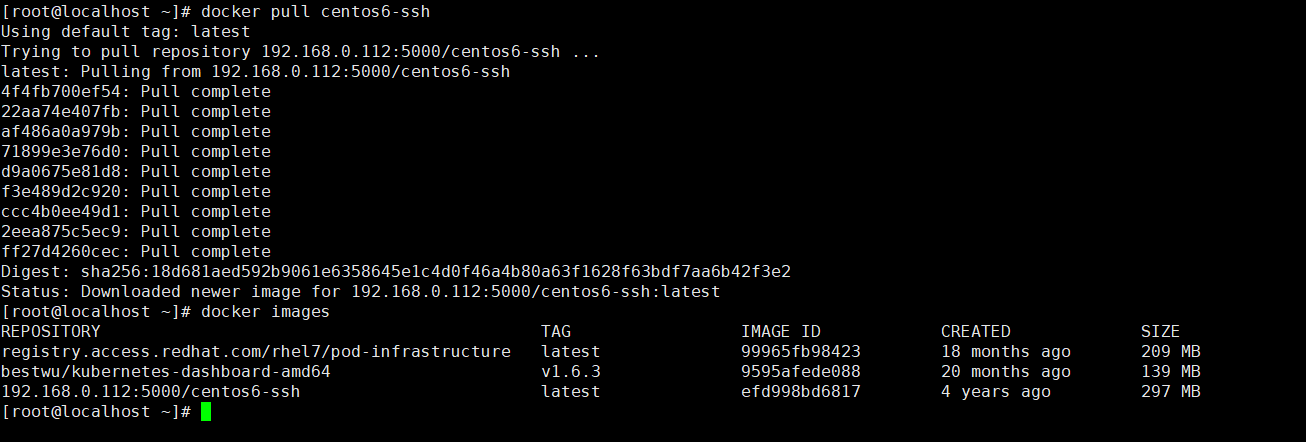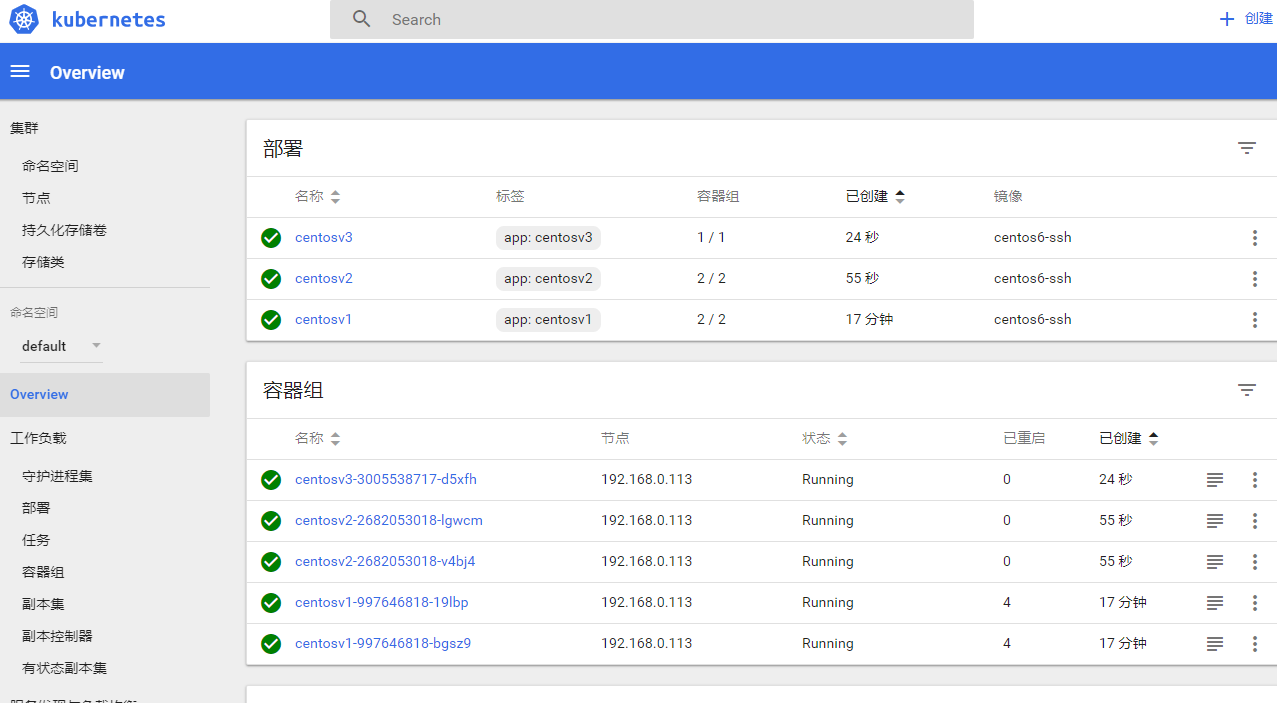1、Kubernetes本地私有仓库
Docker仓库主要用于存放Docker镜像,Docker仓库分为公共仓库和私有仓库,基于registry可以搭建本地私有仓库。使用私有仓库有如下优点:
1)节省网络带宽,针对于每个镜像不用去Docker官网仓库下载;
2)下载Docker镜像从本地私有仓库中下载;
3)组件公司内部私有仓库,方便各部门使用,服务器管理更加统一;
4) 可以基于GIT或者SVN、Jenkins更新本地Docker私有仓库镜像版本。
2、构建Docker 本地私有仓库方法
1)下载Docker registry镜像
docker pull registry
2)启动私有仓库容器,启动命令如下:
mkdir -p /data/registry/ docker run -itd -p 5000:5000 -v /data/registry/:/tmp/registry docker.io/registry
Docker 本地仓库启动后容器启动,

默认情况下,会将仓库存放于容器内的/tmp/registry目录下,这样如果容器被删除,则存放于容器中的镜像也会丢失,所以我们一般情况下会指定本地一个目录挂载到容器内的/tmp/registry下。
3、上传镜像至本地私有仓库
客户端上传镜像至本地私有仓库,如下以docker.io/lemonbar/centos6-ssh 为例,上传至私有仓库服务器
docker pull docker.io/lemonbar/centos6-ssh docker tag efd998bd6817 centos6-ssh #改名字 docker rmi docker.io/lemonbar/centos6-ssh docker tag centos-ssh 192.168.0.112:5000/centos6-ssh docker push 192.168.0.112:5000/centos6-ssh
4、检测本地私有仓库:
curl -XGET http://192.168.0.112:5000/v2/_catalog curl -XGET http://192.168.0.112:5000/v2/centos6-ssh/tags/list
5、在docker配置文件中添加如下代码并且重启
OPTIONS='--selinux-enabled --log-driver=journald --signature-verification=false --insecure-registry 192.168.0.112:5000' ADD_REGISTRY='--add-registry 192.168.0.112:5000'


6、Kubernetes Pods配置私有仓库
创建kuber-namespace.yaml
{ "kind": "Namespace", "apiVersion": "v1", "metadata": { "name": "kube-system" } }
建kubernetes-dashboard.yaml,读取本地私有仓库,代码如下:
# Copyright 2015 Google Inc. All Rights Reserved. # # Licensed under the Apache License, Version 2.0 (the "License"); # you may not use this file except in compliance with the License. # You may obtain a copy of the License at # # http://www.apache.org/licenses/LICENSE-2.0 # # Unless required by applicable law or agreed to in writing, software # distributed under the License is distributed on an "AS IS" BASIS, # WITHOUT WARRANTIES OR CONDITIONS OF ANY KIND, either express or implied. # See the License for the specific language governing permissions and # limitations under the License. # Configuration to deploy release version of the Dashboard UI. # # Example usage: kubectl create -f <this_file> kind: Deployment apiVersion: extensions/v1beta1 metadata: labels: app: kubernetes-dashboard version: latest name: kubernetes-dashboard namespace: kube-system spec: replicas: 2 selector: matchLabels: app: kubernetes-dashboard template: metadata: labels: app: kubernetes-dashboard spec: containers: - name: kubernetes-dashboard image: 192.168.0.112:5000/kubernetes-dashboard-amd64 imagePullPolicy: Always ports: - containerPort: 9090 protocol: TCP args: # Uncomment the following line to manually specify Kubernetes API server Host # If not specified, Dashboard will attempt to auto discover the API server and connect # to it. Uncomment only if the default does not work. - --apiserver-host=192.168.0.111:8080 livenessProbe: httpGet: path: / port: 9090 initialDelaySeconds: 30 timeoutSeconds: 30 --- kind: Service apiVersion: v1 metadata: labels: app: kubernetes-dashboard name: kubernetes-dashboard namespace: kube-system spec: type: NodePort ports: - port: 80 targetPort: 9090 selector: app: kubernetes-dashboard
1)在docker主机添加本地仓库地址 vim /etc/docker/daemon.json
{ "insecure-registries":["192.168.0.112:5000"] }
2)/etc/kubernetes/kubelet配置文件将KUBELET_POD_INFRA_CONTAINER选项注释,同时添加一个新的KUBELET_POD_INFRA_CONTAINER参数,代码如下,前提需要将pod-infrastructure镜像上传私有仓库
在每台nodes上重启kubelet服务:systemctl restart kubelet.service
#KUBELET_POD_INFRA_CONTAINER="--pod-infra-container-image=registry.access.redhat.com/rhel7/pod-infrastructure:latest" KUBELET_POD_INFRA_CONTAINER="--pod-infra-container-image=192.168.0.112:5000/pod-infrastructure:latest"
3) nodes上Docker配置文件/etc/sysconfig/docker中,添加如下代码,并重启Docker服务:
ADD_REGISTRY='--add-registry 192.168.0.112:5000'






